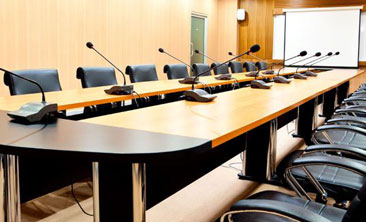

Leave a message



No matter what kind of broadcasting audio system, it can be basically divided into four parts: source component equipment, signal amplification and processing equipment, transmission lines, and speaker system.
Source component equipment:source component equipment is usually provided for radio broadcasting, CD player and recording card holder, in addition to microphones, electronic instruments and so on.
Signal amplification and processing equipment:This includes the sound console, preamplifier, power amplifier, various controllers and audio processing equipment. The primary task of this part of the equipment is signal amplification, followed by signal selection. Sound console and preamplifier play similar roles and positions (of course, the function and performance of the mixer are higher). Their basic functions are to complete signal selection and preamplification. In addition, they can adjust and control the volume and sound effects. Sometimes, in order to achieve better frequency equalization and timbre beautification, a graphic equalizer is also put in separately. This part is the "control center" of the whole radio and audio system. The power amplifier amplifies the signal from the preamplifier or sound console and then pushes the loudspeaker through the transmission line.
Although the transmission line is simple, it has different requirements with different systems and transmission modes. For auditorium, theatre and so on, because the distance between the power amplifier and loudspeaker is not far, the direct feeding mode of low resistance and high current is generally adopted. The transmission line requires the loudspeaker line in the special pa speaker system. However, for pa speaker system, because of its wide service area and long distance, in order to reduce the loss caused by transmission lines, the high-voltage transmission mode is often used. Because of the small transmission current, the transmission line requirements are not high.
Speaker system: Speaker system requires the whole system to match each other, at the same time, the choice of its position should be realistic. The auditorium, theatre, song and dance hall require high timbre and sound quality, while loudspeakers generally use high-power speakers; while public broadcasting systems, because it does not require so high timbre, usually use 3W-6W smallpox speakers.
 【DSPPA Demo】PAVA8000 EN54 Voice Evacuation SystemNovember 12, 2020Abstract: DSPPA PAVA8000 EN54 Voice Evacuation SystemToday, we are gonna show you a demo about our PAVA8000 EN54 Voice Evacuation System.PAVA8000EN54 Voice Evacuation System can not only support manua...view
【DSPPA Demo】PAVA8000 EN54 Voice Evacuation SystemNovember 12, 2020Abstract: DSPPA PAVA8000 EN54 Voice Evacuation SystemToday, we are gonna show you a demo about our PAVA8000 EN54 Voice Evacuation System.PAVA8000EN54 Voice Evacuation System can not only support manua...view The National Standard Approval Meeting held in BeijingJuly 19, 2019The National Standard Approval Meeting held in BeijingThe approval meeting of the National StandardTechnical standard of public address system engineeringis held in Beijing on July 16, 2019. Xue Chang...view
The National Standard Approval Meeting held in BeijingJuly 19, 2019The National Standard Approval Meeting held in BeijingThe approval meeting of the National StandardTechnical standard of public address system engineeringis held in Beijing on July 16, 2019. Xue Chang...view


